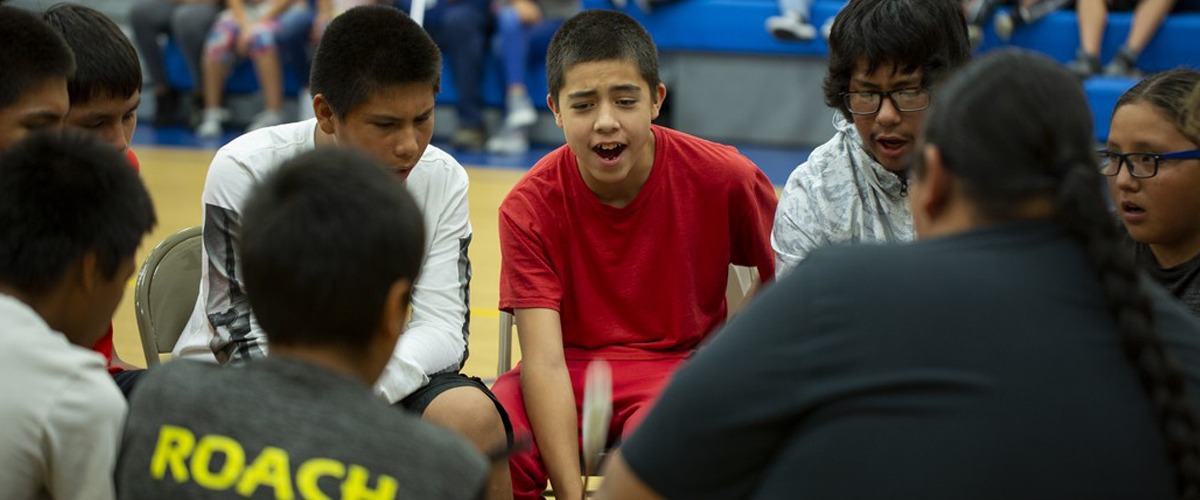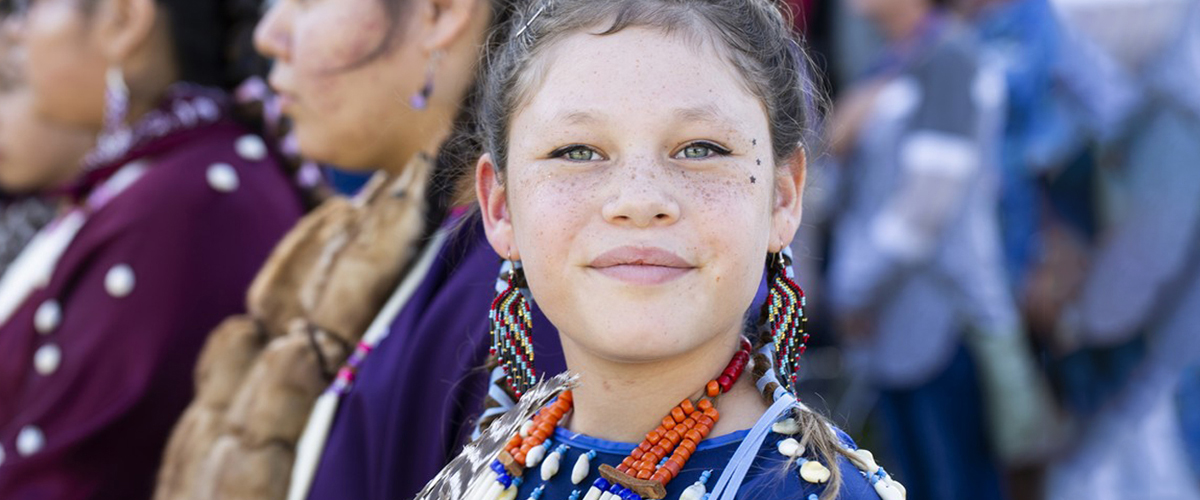Lakota Studies
The Lakota Studies classroom is under the watchful eye of seasoned teacher LaRayne Woster, who covers the topic with first- through eighth-grade students. Herself a citizen of the Rosebud Sioux Tribe and the United States, her passion for the language, the culture and the students is clear.

The primary goal of her teaching is that students become proud, life-long learners of who they are as persons of Native American heritage and that they can demonstrate that pride with knowledge both of the Lakota/Dakota language and culture. She teaches the language and culture as interwoven and strives to help each student grow in the ability to speak Lakota/Dakota. In seeking to promote language revitalization, St. Joseph’s Indian School utilizes curriculum from the Lakota Language Consortium.
Culture and spirituality go hand-in-hand at St. Joseph’s Indian School and LaRayne embodies that through teaching that knowledge comes in the form of a powerful academic and values-based education bound with a sense of prayer and healthy living.
Cultural Programming
Many other elements supplement the cultural knowledge that students gain in the classroom.

- Growth in the language is supported by vocabulary shared in the homes, language competitions, prayers and songs in Lakota at school and at Mass, Lakota Word Wednesday, phrase of the week and the use of Lakota phrases in all classrooms, not just Lakota Studies.
- Students have opportunities to participate in Inipi or sweat lodge on campus. Inipi means “to live again.” It is a purification rite that includes pouring water on hot rocks and rounds of prayer.
- Sage growing and harvesting is part of the cultural experience students enjoy. Sage is one of the most treasured Native American ceremonial plant used as an incense and purifying herb. Students watch the process from seedling to harvest. Harvest starts with a prayer to Grandmother Earth (Uŋči Makhá) to thank her for providing the plant. Students learn to cut a short distance above the lowest leaves on the plant so that it can grow back strong. Cut sage is dried, bundled for storage and used for smudging, prayer ties and ceremonies.
- Students participate in the Pahá Makȟásaŋ Lowáŋpi, the Chalk Hills Singers, who are the school’s traditional drum group.
- Students learn about traditional foods and their preparation through activities around campus. Chokecherries are harvested and made into wojapi, a Native American berry sauce. Students take part in making and sharing waśŋa, a pounded mixture of buffalo meat and dried berries. Indian tacos and other traditional foods are enjoyed at some campus celebrations.
- All classrooms are enhanced with shared components of The Seven Essential Understandings of the Očhéthi Šakówiŋ.
- An Annual Cultural Trip takes students completing the seventh grade on a week-long journey to sites of cultural, spiritual and historical significance to the Lakota. They travel across South Dakota, Montana and Wyoming in this learning opportunity. Prior learning makes the trip more enriching for the seventh-graders, and they present their experience to other students upon returning.
- The school provides culturally relevant drug and alcohol prevention programming through Sons and Daughters of Tradition.
- Other opportunities to learn, grow in and strengthen culture take place as well, such as visits by elders, traditional Lakota archery, ribbon skirt making and more.

